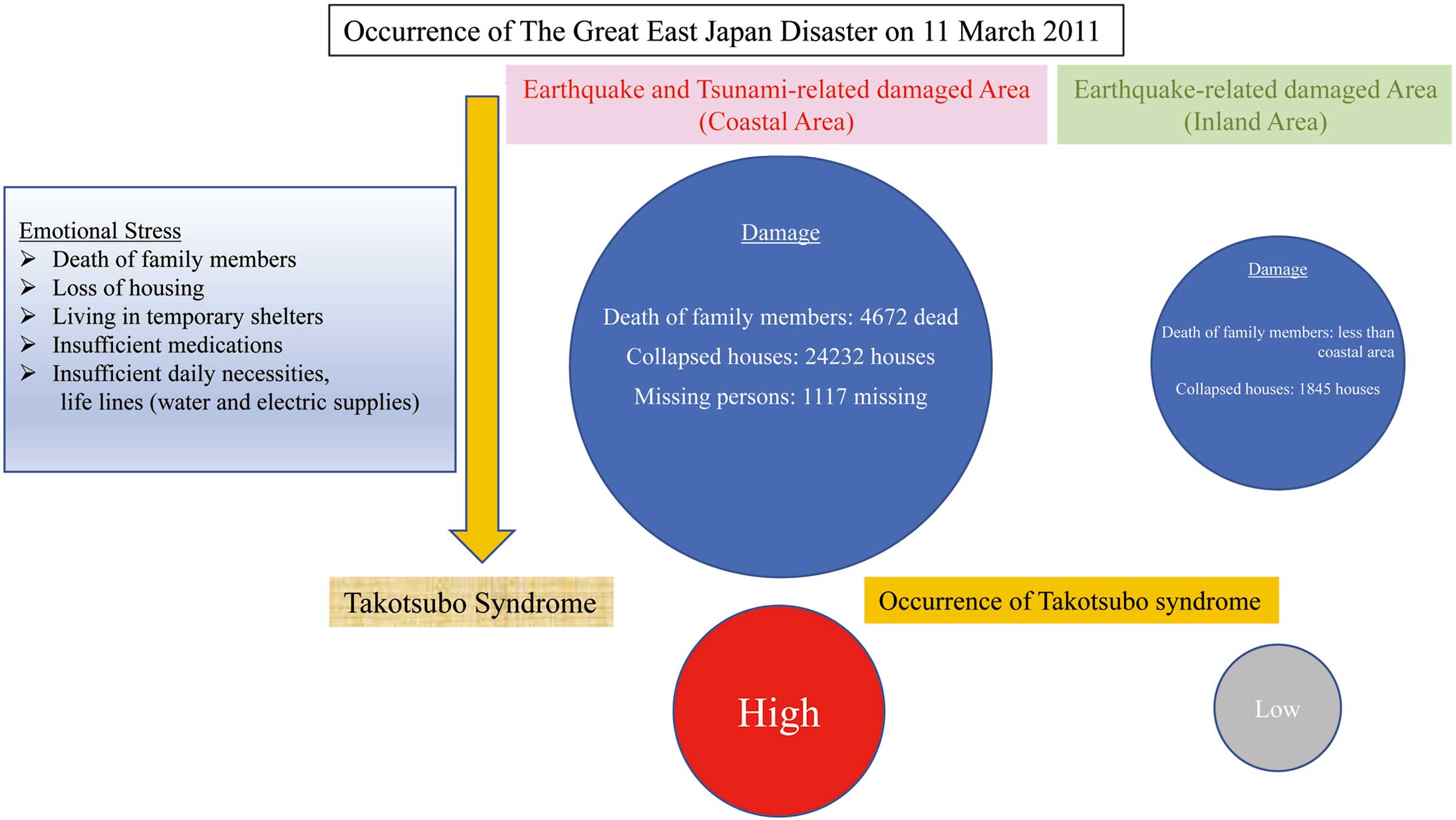2021 Volume 85 Issue 10 Pages 1840-1841
2021 Volume 85 Issue 10 Pages 1840-1841
Takotsubo syndrome (TS) was first described in 1990 by Sato et al.1,2 They reported 3 patients characterized by chest pain, ECG changes and transient left ventricular systolic dysfunction with apical ballooning mimicking acute myocardial infarction but with no evidence of coronary artery occlusion. TS occurs predominantly in postmenopausal elderly females with preceding emotional or physical stress triggers.3,4 Among a variety of events reported as an emotional stress trigger, disaster-related stress such as death of a family member and loss of houses is also known as triggers.
Article p 1834
After the Mid-Niigata Chuetsu earthquake in 2004, Watanabe et al first reported the effect of earthquakes on the occurrence of TS. They demonstrated that the incidence of takotsubo cardiomyopathy 1 month after the earthquake was approximately 24-fold higher than before the earthquake.5,6 The association of TS with disasters such as earthquakes, tsunamis, floods, and huge mountain mud slides is increasingly being recognized. There have been many reports about disaster-related TS after the Christchurch earthquake in 2010, the Queensland floods in 2011, and the Central Italy earthquake in 2016.7–10
In this issue of the Journal, Itoh et al11 demonstrate, for the first time, the long-term effect of a large-scale disaster on the occurrence of takotsubo cardiomyopathy. Similar to earlier reports, an immediate increase in the occurrence of takotsubo cardiomyopathy after the Great East Japan Earthquake was observed, resulting in a higher incidence in the 2 years following the great earthquake than before the earthquake (Figure). It is notable that there was a significantly higher occurrence of TS in coastal areas that were stricken by major tsunamis than in the inland areas. This suggests a much stronger association between the severity of damage by a disaster and the occurrence of TS. The pathophysiology of TS is incompletely understood. However, catecholamine surge is known to play an important role by causing direct catecholamine toxicity, epicardial coronary artery spasm, microvascular dysfunction, and enhanced inflammation.12 Lin et al demonstrated that enhanced sympathetic activity, assessed by 24-h Holter ECG monitoring, was observed during the Taiwan earthquake in 1999.13 It is reasonable that the greater the damage caused by the disaster, the higher the incidence of TS.

In the coastal areas stricken by the major tsunami, the damage incurred by the Great East Japan Disaster was greater than in the inland areas. A higher incidence of takotsubo syndrome was observed in the coastal areas.
Aoki et al demonstrated that the occurrence of other cardiovascular diseases increased after the Great East Japan Earthquake.14 It has been previously reported that the incidence of cardiovascular disease, such as acute coronary syndrome, stroke, and pulmonary embolism, increased after great earthquakes such as the Hanshin-Awaji earthquake in 1995, the Niigata-Chuetsu earthquake in 2004, the Noto Peninsula earthquake in 2007, and the Christchurch earthquake in 2010.7,8,15 These reports, including the current study, suggest that careful management is necessary to prevent disaster-related cardiovascular diseases, including TS, after great disasters.
At the 10-year anniversary of the Great East Japan earthquake, this report gives us an opportunity to consider disaster-related TS. Here, anew, we express our condolences for the people who have lost their lives in disasters and offer our heartfelt sympathy to those affected by the disasters.
There is no conflict of interest in this study.